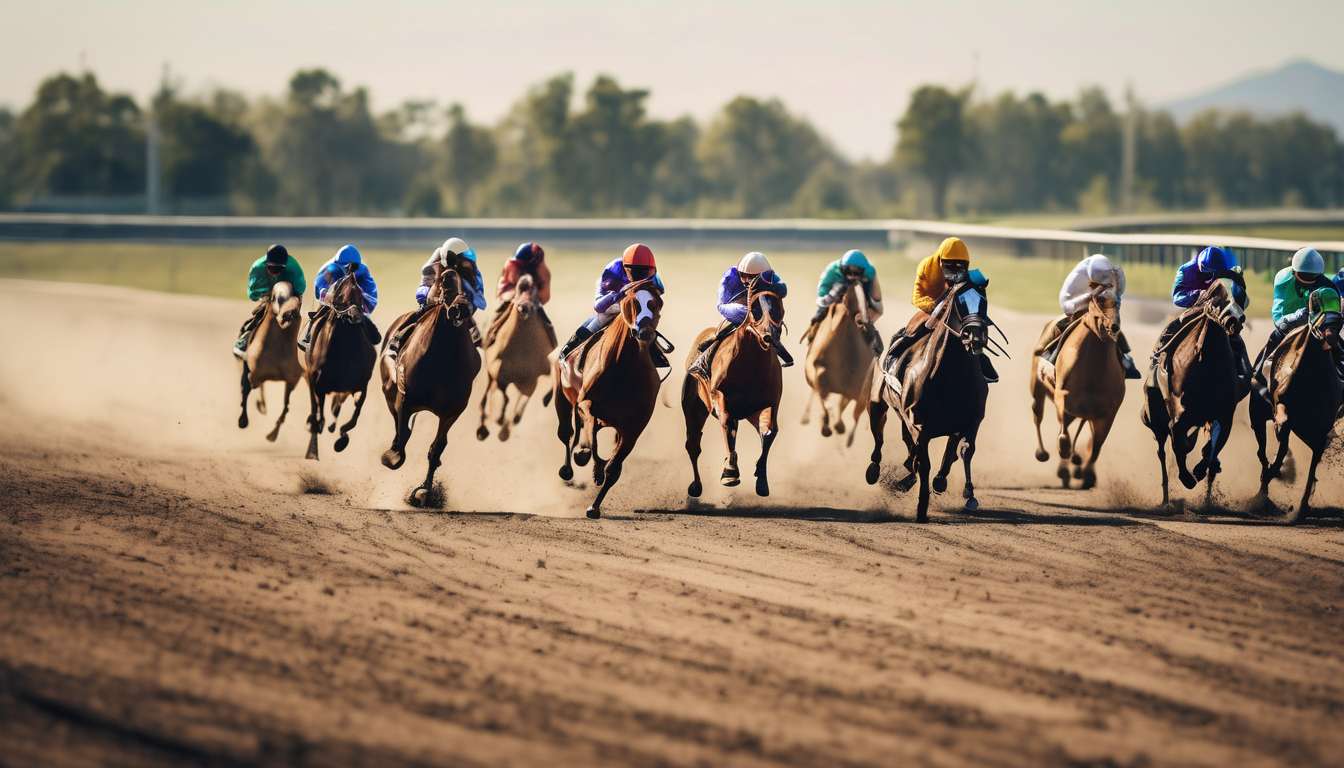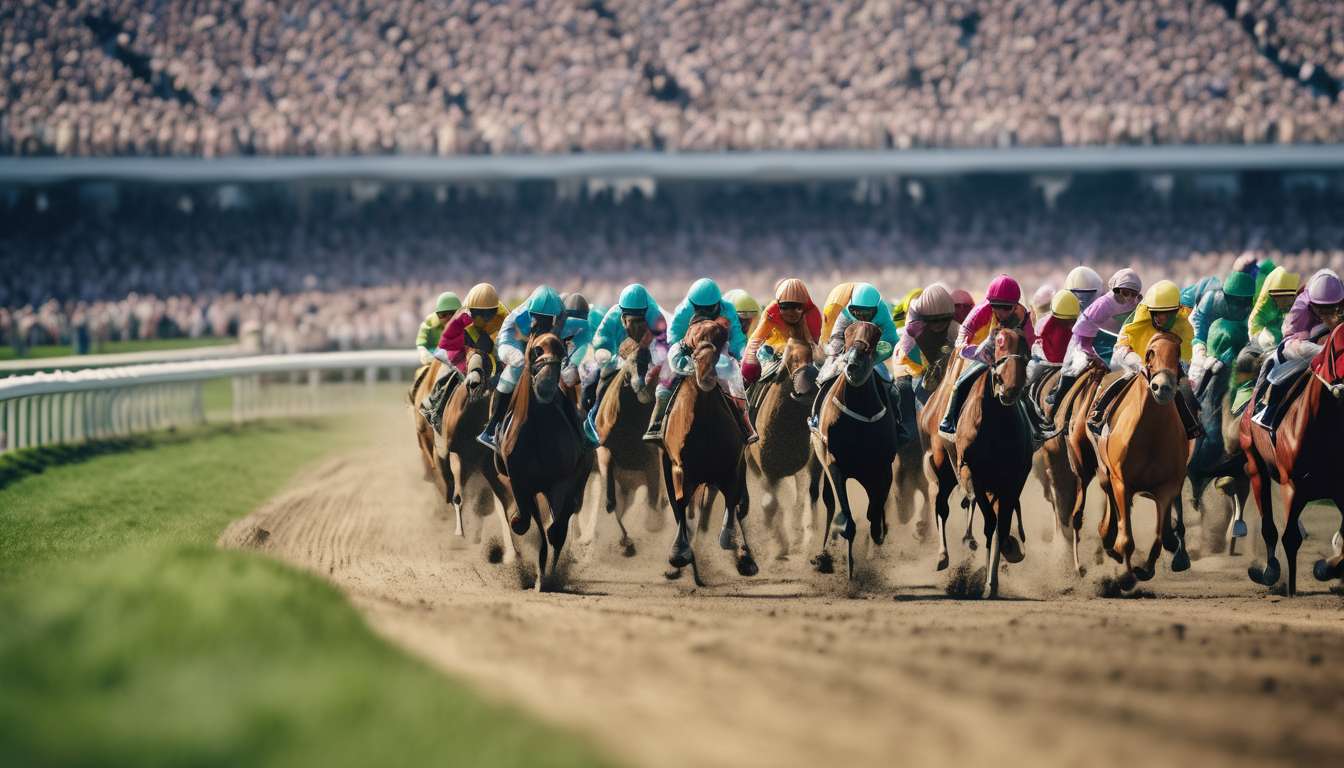In the world of horse racing, we constantly seek the perfect edge and the elusive formula to predict a winner. As avid enthusiasts and bettors, we understand the thrill of the race and the intricate dance between class and distance. Our journeys have led us through countless racecourses, where each gallop tells a story of strategy and chance.
In this article, we delve into eight indispensable horse betting guides that illuminate the nuances of class and distance. These guides are our trusted companions, offering insights that transform mere guesses into informed decisions. Together, they unveil the secrets of assessing a horse’s potential based on:
- Class: A measure of its competition level.
- Distance: Its performance across varying distances.
By exploring these guides, we aim to enhance our understanding and enjoyment of the sport, empowering us to make smarter, more calculated bets.
Let’s embark on this journey of discovery and excitement together.
Understanding Class Levels
Class Levels in Horse Racing
Class levels in horse racing are crucial for assessing a horse’s competitive ability and determining the races they qualify for. Understanding these levels helps us make informed betting decisions and allows us to gauge how horses might stack up against the competition.
Community and Connection
As a community of racing enthusiasts, understanding class levels fosters a sense of belonging as we navigate the thrilling world of horse racing together. By examining class consistency, we can identify horses that regularly perform well within their designated level. Sharing these insights and predictions keeps us connected.
Distance Preferences and Class Levels
Understanding a horse’s distance preferences in conjunction with class levels enables us to predict potential outcomes more accurately. When horses consistently perform well at certain distances within their class, it strengthens our community’s shared knowledge.
Enhancing Betting Strategies
- Understanding class levels and distance preferences makes our betting strategies more robust.
- By decoding these intricacies together, we enhance our collective enjoyment and success in horse racing.
This shared knowledge and collaborative analysis enrich our experiences and improve our chances in betting.
Decoding Distance Variability
Understanding how different distances affect a horse’s performance is key to refining our betting strategies. Together, we can unlock the secrets of distance variability and elevate our game.
Horses, like us, have preferences, and recognizing these distance preferences can give us an edge. Some thrive in sprint races, while others excel in longer distances. It’s crucial to identify which horses maintain class consistency across various distances.
Steps to Analyze Distance Preferences:
-
Examine Past Performances:
- Look for patterns in how a horse handles different lengths of track.
- Identify any consistent trends in performance at particular distances.
-
Consider Class Levels:
- Assess if a horse competes well at a certain class level and distance.
- Evaluate the likelihood of the horse remaining consistent under similar conditions.
-
Monitor Shifts in Distance:
- Pay attention to any changes in distance that might affect a horse’s performance.
- Analyze how stepping up or down in distance might impact their competitive edge.
By applying these insights, we can strengthen our betting community and make informed choices. Recognizing and leveraging distance preferences and class consistency will provide a competitive advantage in betting strategies.
Analyzing Class Changes Impact
Class Changes and Horse Performance
Class levels play a crucial role in determining how a horse might fare in a race. When horses move up or down in class, it can significantly impact their competitiveness.
We’ve all seen horses that dominate lower class levels but struggle when facing tougher competition. This is where understanding class consistency becomes key.
Assessing Class Consistency
To evaluate a horse’s ability to maintain its form when switching classes, consider the following:
-
Proven Class Consistency: A horse that consistently performs well across different class levels is more likely to succeed regardless of the competition.
-
Thriving in Lower Classes: Some horses excel when they drop to a lower class, capitalizing on less challenging opponents.
Analyzing Past Performances
By examining past performances in different class levels, we can identify patterns that reveal a horse’s true potential. Consider these factors:
- Historical Performance: Look at how the horse has performed in similar class levels in the past.
- Distance Preferences: Coupling class analysis with a horse’s preferred racing distance can enhance our betting strategies.
By integrating this knowledge into our betting approach, we can make more informed decisions and feel more connected to the racing community.
Evaluating Distance Preferences
Evaluating a Horse’s Potential
When evaluating a horse’s potential, it is crucial to consider how well it performs at various distances. This understanding enhances our betting strategies.
Unique Distance Preferences
Just like humans have favorite places, horses have unique distance preferences. By understanding these preferences, we can more accurately predict a horse’s performance.
Key Considerations
-
Past Performances and Class Levels:
- Examine past performances to gain insights into a horse’s adaptability to different distances.
- Note that a horse excelling in a specific class level at shorter distances may not perform similarly in longer races.
-
Consistent Performance:
- Pay attention to whether a horse consistently performs well within its preferred distance range.
Tracking and Sharing Observations
- Track performances across various distances, noting any patterns that emerge.
- Share observations with others to improve betting strategies and strengthen community ties.
Conclusion
Evaluating distance preferences not only helps make informed decisions but also fosters a sense of belonging as we navigate the thrilling world of horse racing.
Unraveling Class Consistency Clues
Analyzing a Horse’s Potential
When assessing a horse’s potential, it’s essential to delve into clues about its consistency across various class levels. Understanding a horse’s class consistency can be the key to making informed betting choices.
Examining Past Performances
By examining past performances, we can:
- Identify patterns.
- Predict how a horse might fare against different competition levels.
It’s not just about whether a horse can win; it’s about maintaining its form against varying class levels.
Community Insight Sharing
In our community, we thrive by sharing insights and strategies that deepen our understanding of these subtle yet critical factors. Class consistency isn’t merely a stat on a page; it’s a narrative of a horse’s journey, revealing its resilience and adaptability.
Empowered Decision-Making
Coupled with distance preferences, this knowledge empowers us to make confident decisions. Together, let’s:
- Keep an eye on how horses perform across different scenarios.
- Ensure we stay ahead of the game.
- Make informed choices that unite us in success.
Factoring in Distance Adjustments
Adapting Betting Strategies
Understanding a horse’s performance across various distances is crucial in adapting our betting strategies. This involves evaluating both the horse’s distance preferences and how these align with the class levels they compete in. By doing so, we can better predict whether a horse is likely to maintain class consistency when faced with new challenges.
Key Considerations:
- A horse excelling in shorter sprints might struggle with longer distances, which can impact its performance and alter our betting angles.
- Conversely, some horses improve their performance with more ground to cover, stepping up their game as the distance increases.
Recognizing these tendencies allows us to make informed decisions and feel more connected to the race’s dynamics. Every horse has unique strengths, and understanding these nuances helps us predict performance in various scenarios.
Benefits of Factoring in Distance Adjustments:
- Enhance our ability to anticipate outcomes.
- Foster a sense of camaraderie among bettors who share similar insights.
By considering these factors, we improve our strategic betting approaches and deepen our engagement with the races.
Identifying Class Patterns
Identifying Class Patterns
Identifying class patterns helps us spot horses that consistently perform well against specific competition levels, giving us a competitive edge in our betting strategies. By focusing on class levels, we can uncover insights into a horse’s past performances and determine if they thrive against stronger or weaker fields.
This understanding of class consistency allows us to align our bets with horses that are likely to replicate their success when facing familiar competition.
Distance Preferences
When we delve into horses’ race histories, we should pay attention to how they perform over different distances. Some horses have clear distance preferences that complement their class levels, enhancing their chances of winning.
By recognizing these patterns, we can hone our skills in selecting horses that not only match the competition level but also the race conditions.
Community and Strategy Sharing
Together, we can share insights and strategies, growing our collective knowledge. By mastering class patterns, we strengthen our community and increase our chances of success at the races.
Let’s make informed choices and celebrate our victories together!
Navigating Distance Specializations
Understanding a horse’s distance specialization is crucial for making informed betting decisions and maximizing our chances of success. As a community of informed bettors, we need to delve into how each horse performs across varying distances.
Distance preferences often reveal themselves when a horse consistently excels at certain lengths while struggling with others. By identifying these patterns, we can align our bets with horses that have shown class consistency at specific distances.
When assessing a horse’s past performances, focus on:
- How they competed at different class levels.
- Their knack for certain distances.
- Matching them with an appropriate class level where they can truly shine.
Our collective goal is to spot these distance specialists and leverage that knowledge to our advantage.
Let’s remember to combine our understanding of distance preferences with class consistency. Together, we’ll navigate these complexities, creating an informed and strategic betting community that thrives on knowledge and shared insights.
How do weather conditions affect horse performance in races?
Weather conditions significantly impact horse performance in races.
- Rain or muddy tracks may slow down horses, affecting their speed and agility.
- Hot weather can cause dehydration and fatigue, hindering their performance.
- Conversely, cool and dry conditions are often preferred by horses for optimal performance.
Considerations for Race Analysis and Betting Decisions:
- Analyze weather forecasts to understand potential race conditions.
- Evaluate how specific horses have performed in various weather scenarios.
- Make informed betting decisions based on horses’ past performances in similar weather conditions.
By understanding and incorporating these elements, one can better predict race outcomes and optimize betting strategies.
What are some common betting strategies for newcomers to horse racing?
When starting out in horse racing betting, it’s important to keep things simple.
We often stick to straightforward strategies, such as:
- Betting on a horse with good recent form
- Placing small bets to learn the ropes
It’s also helpful to:
- Research the horses
- Investigate the jockeys
- Understand the trainers
This research allows us to make informed decisions.
As newcomers, we focus on enjoying the experience and gradually expanding our knowledge to improve our betting skills.
How does a horse’s age influence its racing capabilities and betting odds?
When we consider a horse’s age, it directly impacts its racing capabilities and subsequent betting odds.
Younger Horses:
- May possess more speed.
- Have potential for growth.
Older Horses:
- Tend to rely on experience.
- Offer consistency.
These factors influence how we assess a horse’s chances in a race and make informed betting decisions.
Understanding the relationship between age and performance is crucial for predicting outcomes and maximizing our betting success.
Conclusion
You’ve now gained valuable insights on how to bet smartly on horses based on class and distance.
By understanding:
-
Class Levels: Recognize the different class levels in horse racing to assess the competition accurately.
-
Distance Variability: Evaluate how different horses perform over various distances to identify their preferences.
-
Key Patterns: Look for recurring patterns in races, such as a horse’s past performance in similar conditions.
You’re equipped to make informed decisions. Remember to:
-
Analyze Class Changes: Pay attention to any changes in a horse’s class level, as it can significantly impact performance.
-
Evaluate Distance Preferences: Consider whether a horse performs better at shorter or longer distances.
-
Factor in Adjustments: Take into account any adjustments made by trainers or jockeys that might influence race outcomes.
By keeping these factors in mind, you gain a winning edge.
Keep honing your skills, and soon you’ll be confidently navigating the world of horse betting like a pro.
Good luck!




